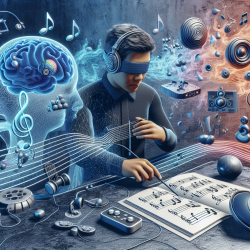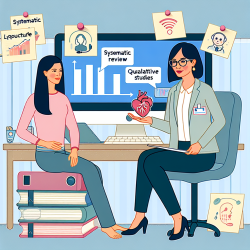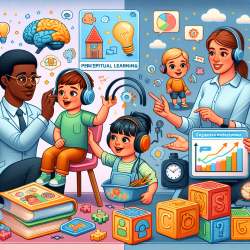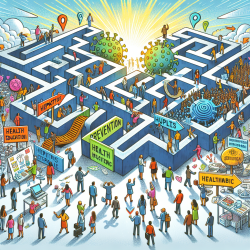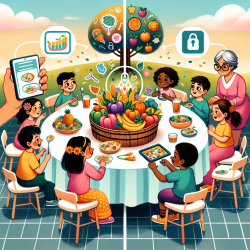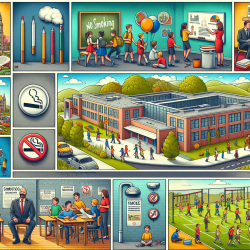Introduction
The integration of technology in education has opened new avenues for accessibility, particularly for individuals with visual impairments. A recent study titled "Perception of Graphical Virtual Environments by Blind Users via Sensory Substitution" provides valuable insights into how Sensory Substitution Devices (SSDs) can enhance the accessibility of virtual environments for blind users. This blog explores how practitioners can leverage these findings to improve their skills and encourages further research in this promising field.
The Potential of Sensory Substitution Devices
Sensory Substitution Devices are non-invasive tools that translate information from one sense to another, such as converting visual information into auditory cues. The study focused on the EyeMusic SSD, which transforms visual parameters like shape, location, brightness, and color into sound. This transformation enables blind users to perceive and interact with virtual environments, offering a new dimension of accessibility.
Key Findings from the Research
- Blind users were able to navigate virtual environments and perform tasks with a high success rate using the EyeMusic SSD.
- Participants reported feeling immersed in the virtual environments, highlighting the potential for such tools in education and training.
- The study demonstrated that SSDs could be used for training in virtual environments, which can then translate to real-world applications.
Implications for Practitioners
For practitioners in special education and therapy, incorporating SSDs like EyeMusic can significantly enhance the learning experience for visually impaired students. Here are some practical steps to consider:
- Integrate SSD Training: Incorporate SSD training into the curriculum to help students familiarize themselves with virtual environments.
- Develop Customized Content: Create virtual scenarios that align with educational goals, allowing students to explore and learn in a controlled, safe environment.
- Encourage Multisensory Learning: Utilize SSDs to promote multisensory learning, which can aid in cognitive development and spatial awareness.
Encouraging Further Research
While the study provides a solid foundation, there is a need for further research to explore the full potential of SSDs in virtual environments. Practitioners are encouraged to collaborate with researchers to develop new applications and improve existing technologies. Areas of interest include enhancing the realism of virtual environments, improving user interfaces, and expanding the range of sensory inputs.
Conclusion
The use of Sensory Substitution Devices in virtual environments offers a transformative opportunity for blind users, enhancing their ability to learn, navigate, and interact with digital content. By implementing the findings from this research, practitioners can significantly improve educational outcomes for visually impaired students. To read the original research paper, please follow this link: Perception of Graphical Virtual Environments by Blind Users via Sensory Substitution.
